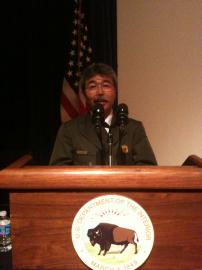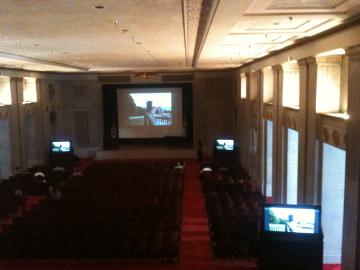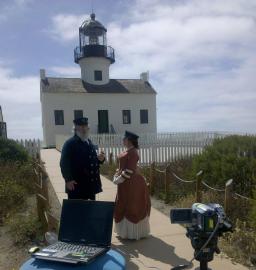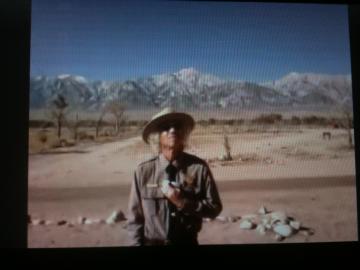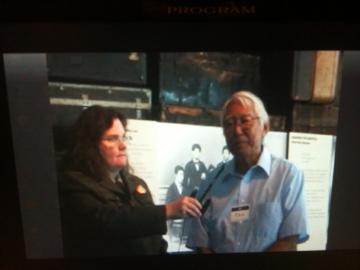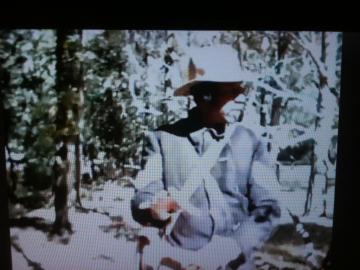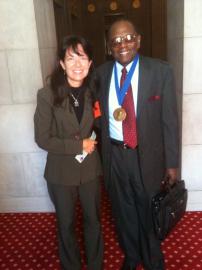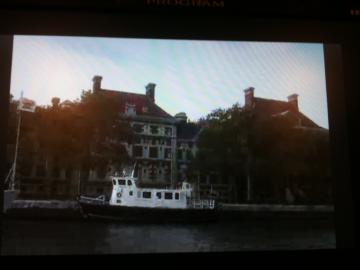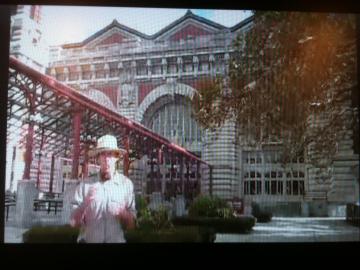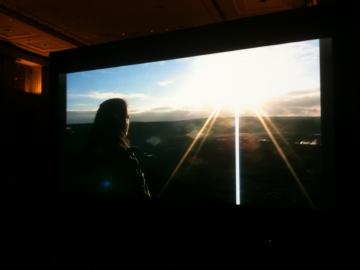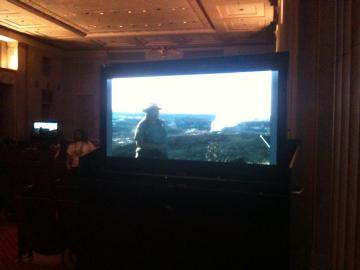
|
|
|
|
October 25, 2010
Live Interactive Virtual Explorations (LIVE) Activities are Showcased at Department of Interior Diversity Days By Kimberly Mann Bruch Federal employees and members of the public experienced an array of National Parks via Live Interactive Virtual Explorations (LIVE) at the Department of Interior (DOI) Diversity Days event in Washington, DC on October 13-14. The LIVE activities allowed audiences at the DOI Main Interior Building (MIB) to experience hard-to-reach culturally-diverse sites throughout the country and interact with National Park Service rangers without leaving the city of Washington, DC. On October 13, Diversity Days activities focused on the following National Park Service and partner sites: The LIVE activities were displayed on five screens in the auditorium; one screen was a projection screen while the other four were plasma monitors.
The Cabrillo National Monument LIVE presentation focused on Spanish exploration during the 16th century and featured rangers dressed in period clothing situated at the Monument's Old Point Loma Lighthouse. The audience was able to communicate in real-time with the presenters about the lifestyles and activities of the Spanish explorers, which are described at Cabrillo's website at http://www.nps.gov/cabr/.
Following the Biscayne Bay National Park and Cabrillo National Monument activities, the LIVE activities focused on an hour-long session with Manzanar National Historic Site - including a virtual side trip to Little Tokyo. The Manzanar and Little Tokyo portions of the event encompassed discussions between National Park Service (NPS)rangers and the audience regarding the experiences of Japanese Americans during World War II.
The final LIVE activity on October 13 took place between the audience at the DOI MIB auditorium and Yosemite National Park. This session featured a ranger in period-dress, who portrayed one of the US Army's Buffalo soldiers. General information about Yosemite National Park is found at http://www.nps.gov/yose. Due to technical issues, a LIVE presentation was not possible, however, Mr. John Stokes, a litigant from the Brown vs. Board equality in education suit was present at the MIB. Mr. John Stokes, a captivating speaker, was positively received by the audience. Many questions were posed to Mr. Stokes following his presentation and allowed for an interactive first-person conclusion to a successful day of events. Information regarding Brown v. Board of Education is found at http://www.nps.gov/brvb/. On October 14, the first LIVE program took place between the DOI MIB Sidney Yates Auditorium (Washington, DC) and the Statue of Liberty National Monument and Ellis Island. This activity allowed the audience to talk with a park ranger situated at the Ellis Island entry station and also get a real-time glimpse at the Statue of Liberty as well as boats bringing visitors to the monument.
The second LIVE activity on October 14 took place between the Yates auditorium and the Knife River Indian Villages National Historic Site (North Dakota). The real-time presentations between two interpretive rangers and the audience sparked a lively question and answer session. Inquiries included "What type of trading took place between the Native Americans and the settlers in the 1800s?" and "What are the artifacts in the earth lodge used for?"
After the Knife River earth lodge LIVE activity, the audience was taken on a final trip to the Hawaii Volcanoes National Park, where presenters were situated overlooking a smoking volcano and welcomed to the island with a Native chant. Following this opening, rangers discussed the park with the audience. Questions following the presentations included "Can you feel earthquakes?" and "Have you ever stepped in hot lava?".
The majority of National Park Service sites (all, but one) utilized Skype loaded on a laptop equipped with an external audio headset/microphone and video camera; one site (Knife River) used Gmal video chat loaded on a laptop equipped with a built-in microphone and web camera. Evaluations were completed by 87 participants (ages 12-69) during the two-day event and 65 percent of participants agreed that the video quality was good while 70 percent agreed that the audio was good. Additional evaluation results include the following: For details about LIVE, please refer to /LIVE. Photographs and video clips depicting the activities are found at http://kimbruch.com/DD. |
